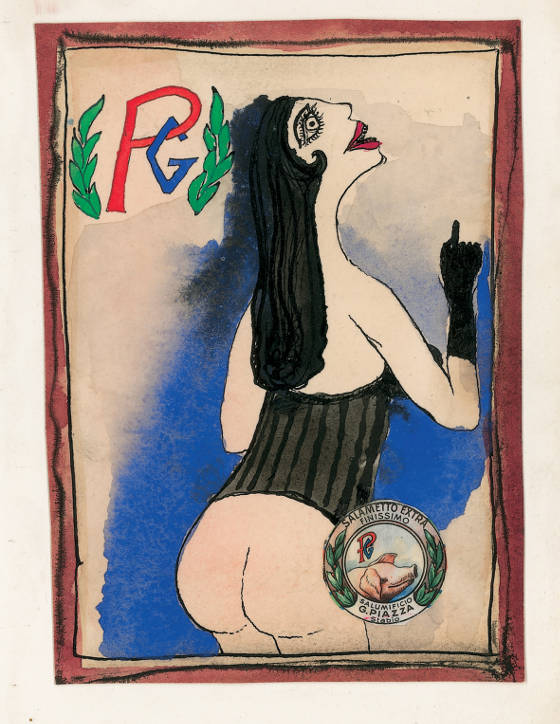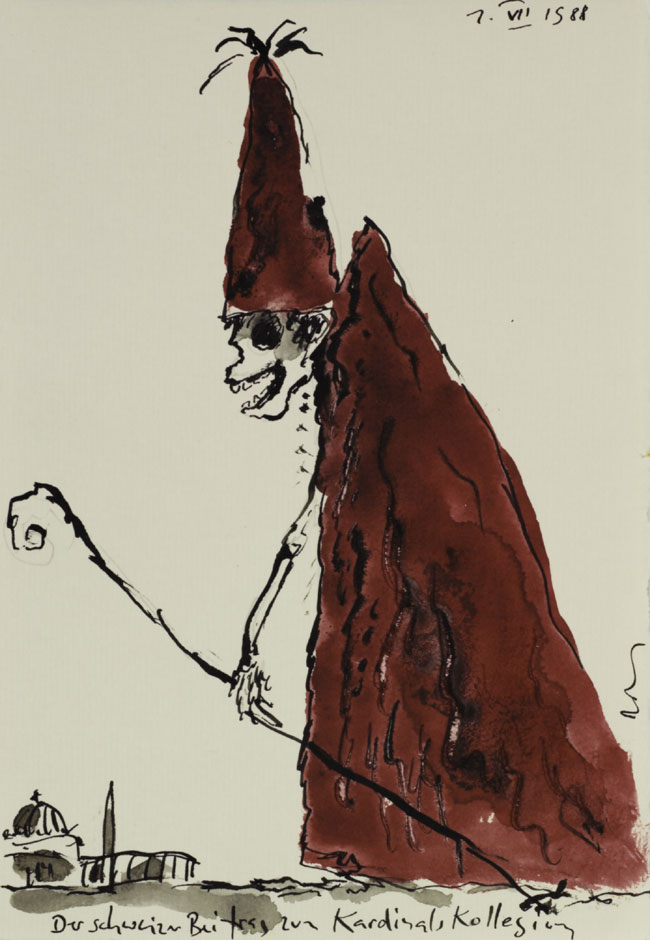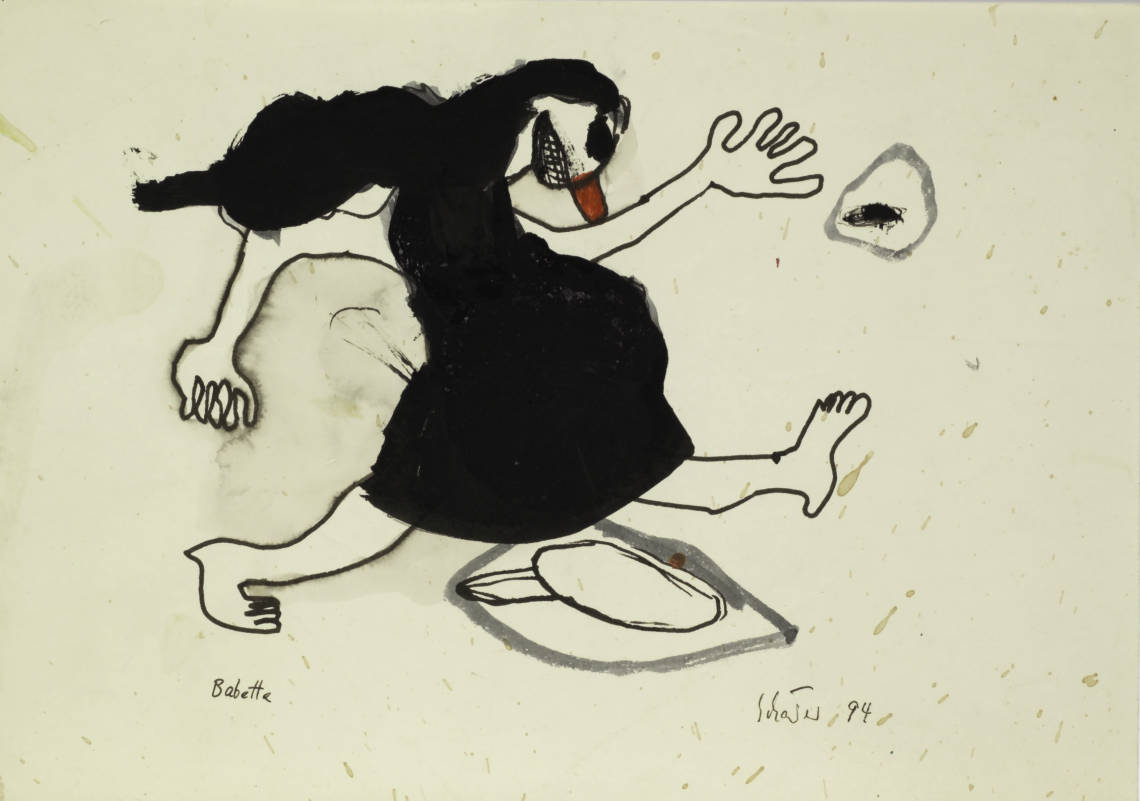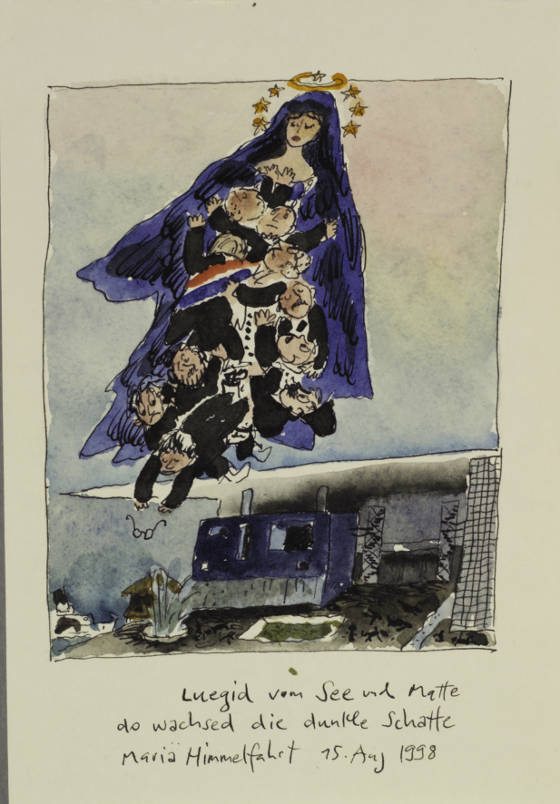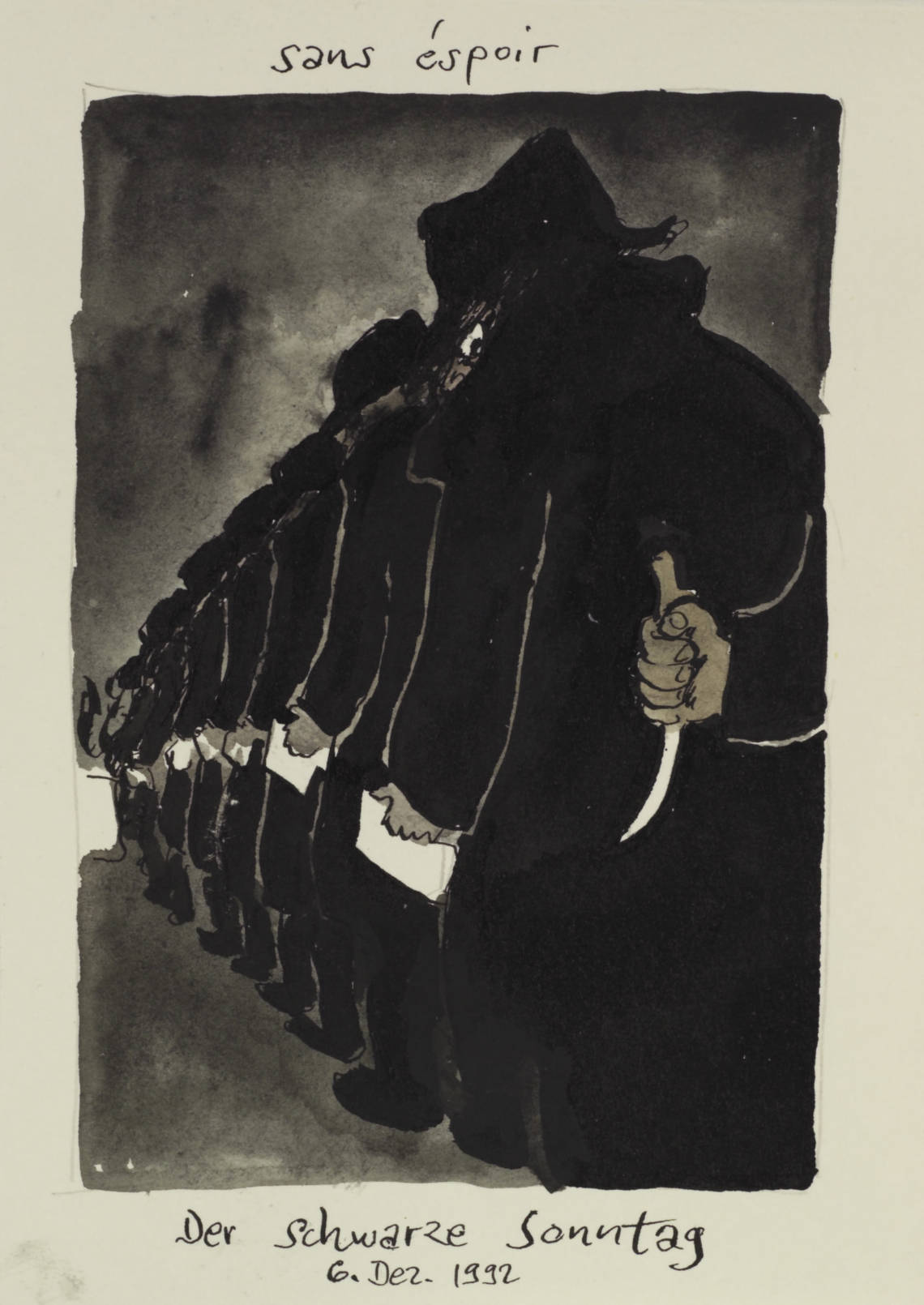Hans Schärer
The Book of Hours, the Notebooks and Other Works on Paper
Robert Wyss
A Correspondence in Watercolours, 1985-2004
The double exhibition honours two Lucerne figures – and two friends who have made a significant contribution to the face of artistic life in Lucerne and elsewhere, and both of whom are sadly no longer with us: Hans Schärer (1927-1997), reduced to the ‘Madonna painter’ because of one dominant group of works, and Robert Wyss (1925-2004), widely known for his original prints. In two independent sequences of rooms, the exhibition acknowledges a less well-known side of the two artists, a side in which they unite art and life, to form what we might call a new cosmos.
At the centre of the Schärer exhibition is his ‘Book of Hours’, an astonishing sequence of 193 drawings, watercolours and collages that the artist made between 1966 and 1970. This collection of ‘everyday things’ consists of fascinating miniatures that oscillate between banality and uniqueness. Also on display are all his notebooks and zigzag fold drawings, along with a little selection of other works on paper, from intimate A4 sheets to monstrous life-size figures. The exhibition bears witness to an artistic life and at the same time reveals the spirit of the age as a profoundly personal storehouse of thoughts.
Robert Wyss often gave his friends small watercolours as gifts or gestures of thanks. But the watercolours now being exhibited at the Museum of Art Lucerne are something special, because they arise out of a correspondence that the artist carried on from 1985 until his death in 2004 with Lucerne publisher and gallery-owner Beni Raeber. Each week a watercolour would change hands, delivered by post, and sometimes bearing comments on the back. The exchange prompted the two friends to engage with contemporary events, political and cultural issues, but everyday personal experiences were also captured in painting, most of them with a ‘sharp pen’, and always with a high degree of artistic sensitivity. The selection of over 200 sheets from the total of 765 watercolour letters from Röbi Wyss to Beni Raeber can be read as an artistic engagement with everyday life, as well as a small, subjective chronicle of twenty years of contemporary and local history.
